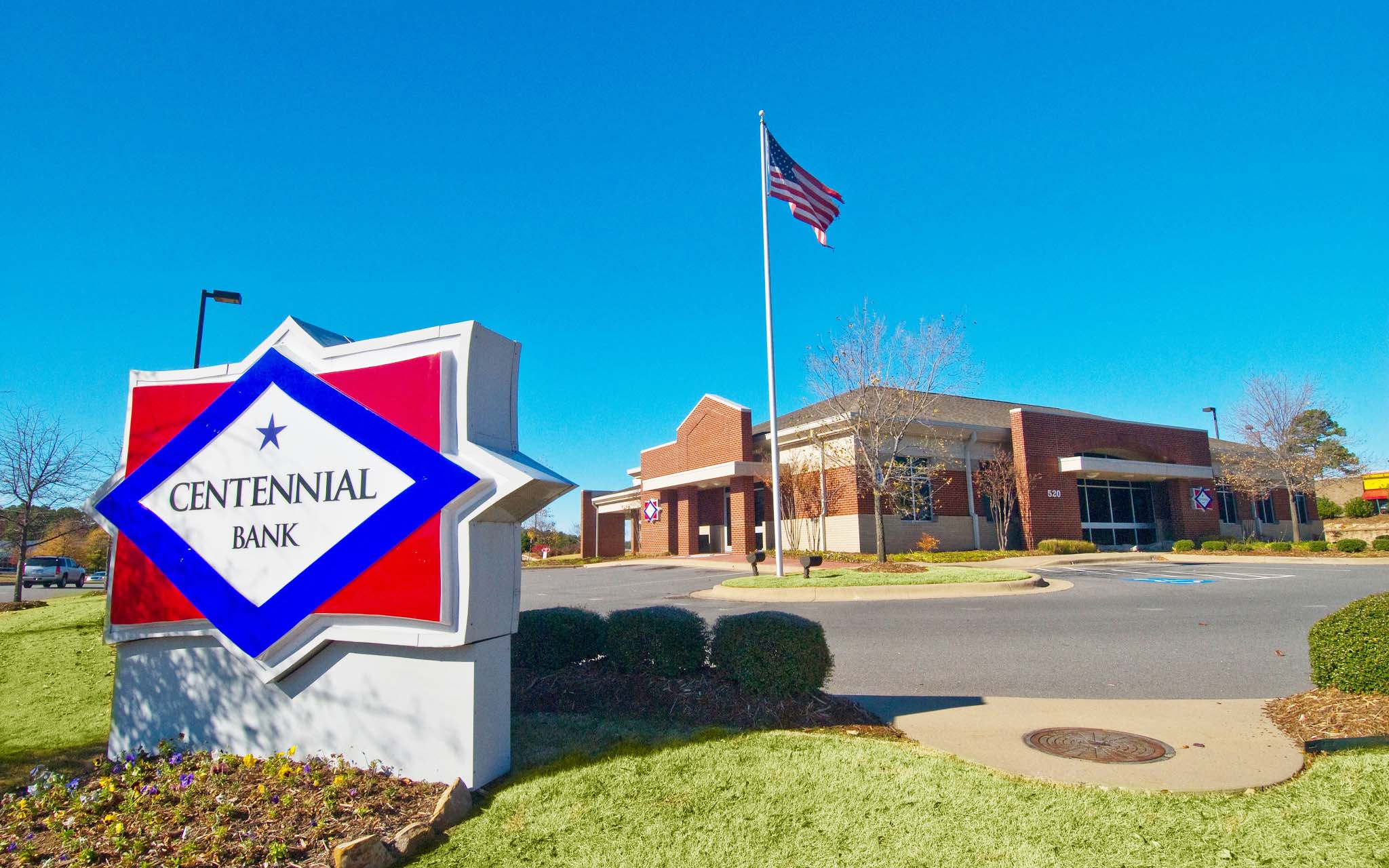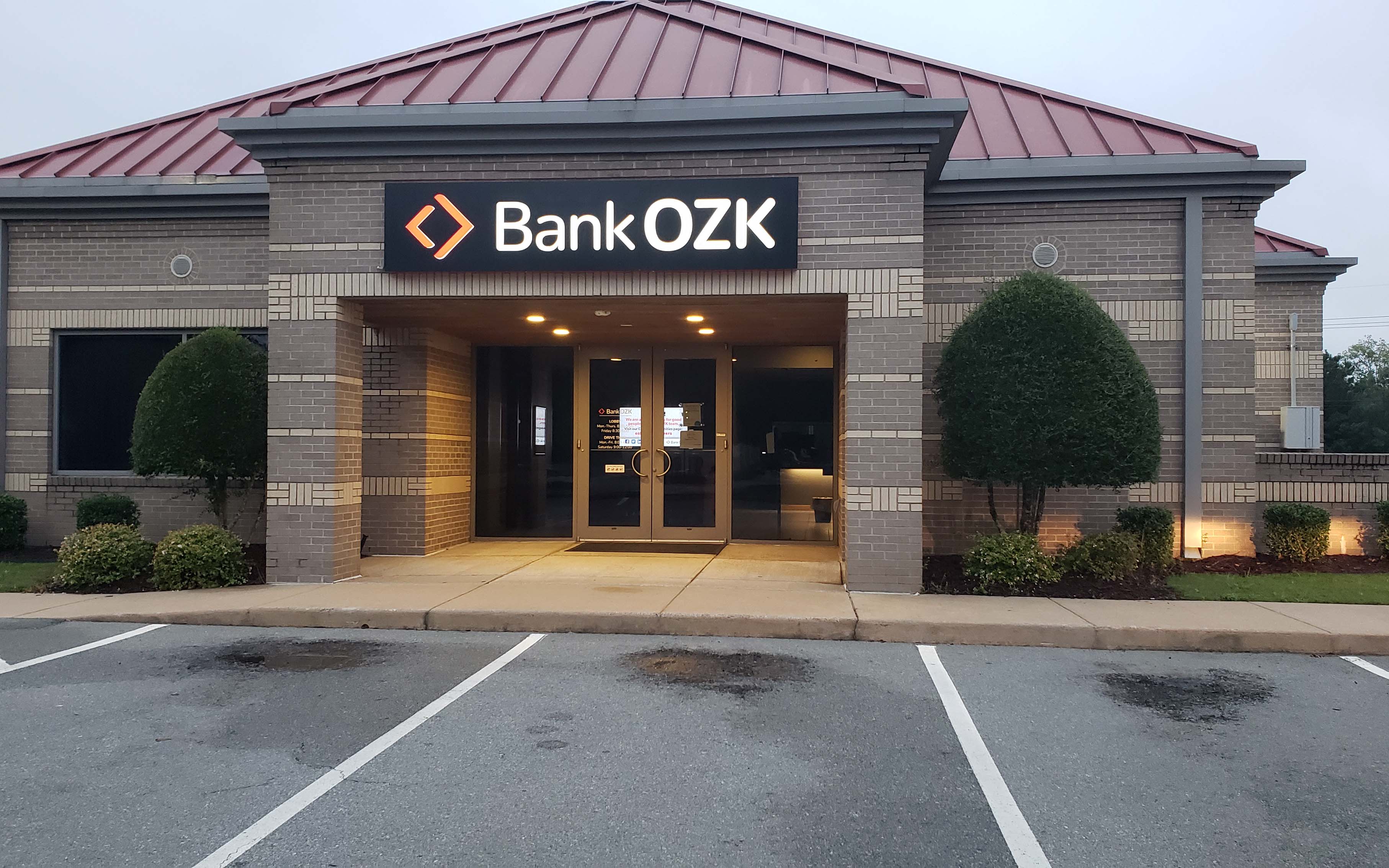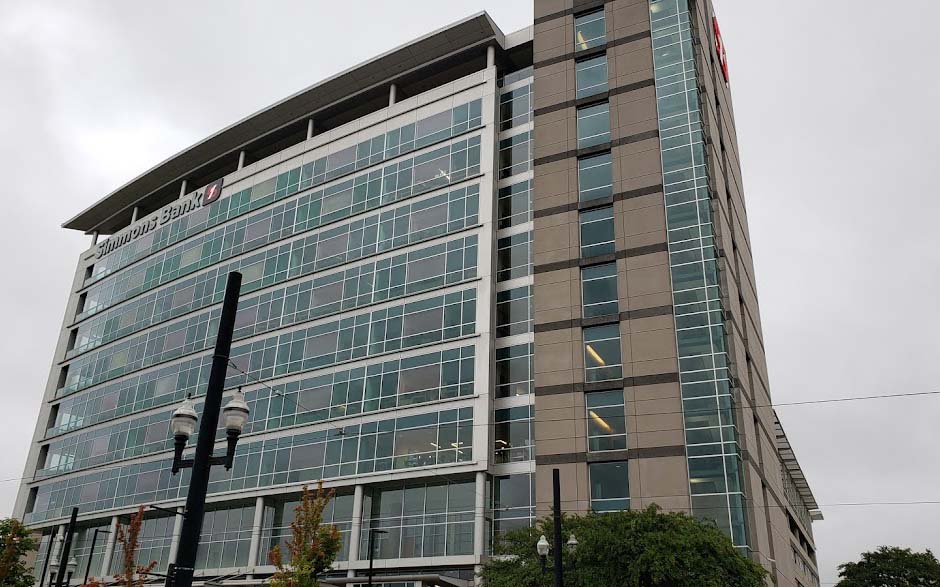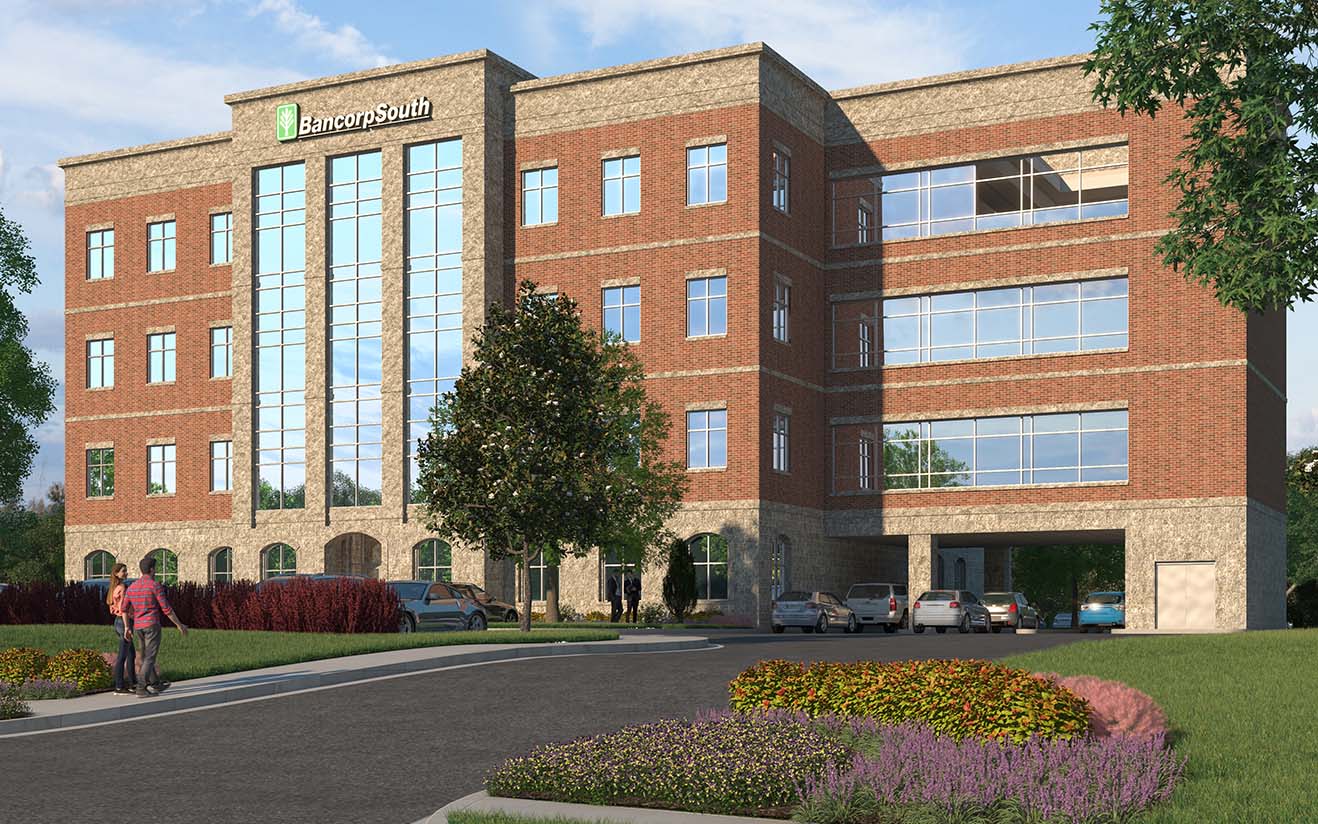Arkansas banks see robust profits one year after pandemic plunge; now looking ahead for M&A activity
September 20-26, 2021
By Wesley Brown
Arkansas’ acquisition-minded regional and community banks saw strong organic profits and deposit growth in the second quarter of 2021 despite tightening margins caused by low interest rates and lagging loan demand.
For the period ended June 30, the nation’s 4,951 FDIC-insured commercial banks and savings institutions reported a robust aggregate net income total of $70.2 billion, up a whopping $51.9 billion or 281% from a year ago. Two-thirds or 66.4% of all banks reported annual improvements in quarterly net income, and the share of profitable institutions increased slightly, up 1.4% year over year to 95.8%, according to the Federal Deposit Insurance Corp.’s (FDIC) quarterly banking profile report on Sept. 8.
More than half or about 53.1% of the nation’s 4,490 FDIC-insured community banks reported higher quarterly net income. FDIC Chair Jelena McWilliams said the increase in banking profits were primarily driven by further economic growth and improved credit conditions, which led to a second consecutive quarter of aggregate negative provision expense.
“The banking industry reported strong earnings in second quarter 2021, supported by continued economic growth and further improvements in credit quality,” McWilliams said. ““With strong capital and liquidity levels to support lending and protect against potential losses, the banking industry continued to support the country’s needs for financial services while navigating the challenges presented by the pandemic.”
However, McWilliams warned that the average net interest margin for all U.S. banks contracted 31 basis points from a year ago to 2.5% — the lowest level on record. That contraction led to a decline in net interest income of $2.2 billion, or 1.7%. As noted, the exceptions were community banks, which normally have a higher net interest margin of 3.25% in the second quarter. Their total net interest income rose $1.4 billion or 7.2%, partly due to income payoff and forgiveness from the U.S. Small Business Administration’s Paycheck Protection Program (PPP) loans.
In Arkansas, the state’s 84 community and regional banks and savings institutions together posted net income of more than $1.17 billion million for the three-month period ended June 30, up a strong 128% from $515 million a year ago.
The growth was mostly fueled by a 9.4% increase in total deposits to nearly $114.8 billion, compared to $104.9 billion in the second quarter of 2020 when a substantial portion of the state’s economy was shut down due to national and state shelter-in-place orders. The growing loan deposits in Arkansas were largely driven by community and regional banks with assets of more than $100 million.
Total loans & leases, however, for Arkansas banks and financial institutions declined in the second quarter to nearly $83.5 billion, down 5.6% from $88.2 billion a year ago. The slide in loan volume also pushed net interest margins for Arkansas financial institutions in the second quarter to 3.4% compared to 3.75% in the same period a year ago.
Little Rock-based Bank OZ, Arkansas’ largest bank with assets of $26.6 billion, reported record second quarter net income $150.5 million, a 199.5% increase from $50.3 million for a year ago. However, the former Bank of the Ozarks saw a three-month decline in total loans and deposits heading into the second half of the year.
In a conference call with top Wall Street analysts concerning the Arkansas regional bank’s second quarter financials, Bank OZK Chairman and CEO George Gleason noted the impact of the current low interest environment on net interest margins and loan yields. Although Bank OZK’s net interest margin was 3.95% in the second quarter, an increase of nine basis points from a year ago, Gleason forecasted that declining loan yield will also push the banks net interest margins lower too.
“I would suggest that we’re at or near peak on the net interest margins probably in the near term. We commented in our management comments that we’re originating loans at lower rates than the rates that were earned on loans last quarter,” Gleason told analysts. “That is unfortunately a part of this very liquid low-rate environment in which we find ourselves (with) yields on all sorts of financial instruments and loans are lower than they were and probably lower than they should be, but it’s part of the environment. So as loans roll off, we’re not able to replace those yields with equal yields.
“We are being diligent to not sacrifice our credit standards and structure standards that we’ve adhered to for a long time that are the hallmark of our great asset quality,” the longtime Bank OZK chief executive continued. “But we are having to get more aggressive on price to not only replace assets that are rolling off, but also grow assets. So, growth is important. Pricing is a bit negotiable …. (but) loan yields are probably almost certainly headed lower.”
Despite those pressures, Bank OZK is not ready to run in place following its zenith growth during the bank’s five-year acquisition spree 2010-2015. In response to a question from an analyst concerning the bank’s future merger & acquisition (M&A) plans, Gleason said organic growth is the Arkansas bank’s number one priority but didn’t rule out future acquisition opportunities.
“So, we’re focused very heavily on organic growth and the opportunities there. Obviously, we announced a share repurchase authorization along with our earnings as well. But our appetite is back for M&A,” Gleason said. “We are looking at opportunities. It is a secondary growth opportunity for us … (but) we don’t want to do anything that would be of a size that would disrupt the momentum that we have organically, but we are actively looking and looking for opportunities.”
Gleason added: “Clearly, our -- we still believe our stock price is undervalued compared to some of the peers and compared to some of the valuations of some of the acquisitions that have occurred recently. Obviously, the M&A market is very active right now. We would look probably to do something of a size where we can do it for cash or some combination of stock and cash.”
As Gleason highlighted, Simmons First of Pine Bluff and Home Bancshares in Conway are two of the peer regional banks that are now active in the M&A market. Little Rock-based Simmons Bank on July 6 announced the opening of a new corporate banking office in Nashville, Tenn., one of the nation’s fastest growing cities commonly known as Music City USA.
Arkansas bank’s new Nashville digs will be located in the new Gulch Union office building at 1222 Demonbreun, a 20-story, LEED certified complex with 330,000 square feet of office and retail space. In addition to occupying approximately 11,900 square feet in the eco-friendly building, Simmons Bank also relocated its West End branch to a first-floor branch of the new corporate office.
On June 7, Simmons Bank announced that it was further expanding in the fast-growing Nashville, Tenn., banking market with plans to acquire Landmark Community Bank and Triumph Bancshares Inc., two Tennessee-based community banks with operations across two of the state’s largest metropolitan areas.
Those proposed stock-and-cash deals with Collierville, Tenn.-based Landmark, and Triumph Bancshares, the parent company of Triumph Bank in Memphis, are valued at approximately $146.3 million and $131.6 million, respectively. The cash portion of the deals will be used primarily for payments to Landmark’s and Triumph’s respective shareholders.
“Landmark and Triumph are two successful, local community banks who share our philosophy of a strong credit culture, significant community involvement and a passion for delivering excellent customer service,” said Simmons First Chairman and CEO George Makris. “The opportunity to combine forces with these two institutions also highly complements our existing footprint in Tennessee and enhances our scale in two of our key growth markets – Memphis and Nashville. In addition to cultural and geographic synergies, the financial metrics of these mergers are compelling and consistent with our M&A strategy of partnering with high-quality banks within our current footprint that represent an efficient use of our capital and delivers on our commitment of building long-term value for our shareholders.”
A month after announcing those two deals, Simmons heralded the opening of a new corporate banking office in Nashville, Tenn., one of the nation’s fastest growing cities commonly known as Music City USA. According to Simmons Bank officials, the Arkansas bank’s new Nashville digs will be located in the trendy Gulch neighborhood in a centerpiece 20-story, LEED certified complex with 330,000 square feet of office and retail space.
On a pro forma basis, the proposed acquisitions of Landmark Community Bank and Triumph Bancshares, Inc. will create the 9th largest bank in Tennessee while vaulting Simmons Bank’s ranking in Nashville from 20th to 15th, company officials said. The proposed acquisitions are subject to the approval of the Landmark and Triumph shareholders and normal regulatory authorizations. Simmons expects to close both transactions by the end of the year.
Operating through its principal subsidiary in Little Rock, publicly traded Simmons First today has approximately $23.4 billion in total assets. The Arkansas regional bank’s six-state footprint includes 198 financial centers, including 68 in Arkansas, 48 in Missouri, 33 in Tennessee, 23 in Texas, 20 in Oklahoma and 6 in Kansas.
To keep pace with Bank OZK and Simmons First, Home BancShares announced Sept. 15 that its operating subsidiary Centennial Bank will acquire Amarillo, Texas-based Happy Bancshares Inc. in an all-stock deal valued at $919 million. In highlighting the transformative deal, Home Bancshares officials said the near $1 billion transaction will give the publicly traded Arkansas bank access to the high growth Texas market and establishes the combined entity as “a dominant Southern institution with the opportunity to leverage each company’s track record of performance, integration and leadership.”
“We have expressed our desire to return to Texas for several years. We are thrilled to have found such a quality bank to partner with to make this expansion a reality. As strong as HOMB’s loan yield is, Happy’s is even stronger. Combine that with joining forces with their founder, J. Pat Hickman, quality employees and 1,300 loyal individual shareholders, makes this a very attractive combination,” said Allison, adding that the deal also positions Home BancShares to expand further into Texas and potentially acquire other banks institutions over time.
Allison called the deal a ‘triple accretive’ transaction,” which refers to the exponential growth potential for the combined bank in the future. “Now being in two of the best growth markets in the U.S. (Texas and Florida) should reap strong returns for our shareholders,” said Allison, who with former State Bank Department Chairman Robert H. “Bunny” Adcock Jr incorporated the Arkansas bank in 1998.
Under the terms of the deal, which was unanimously approved by the Boards of directors of both companies, Happy Bancshares shareholders upon closing of the merger will receive 2.17 shares of Home BancShares stock for each share of Happy Bancshares they own and will begin receiving quarterly dividends declared by Home BancShares. Based on a volume-weighted average closing price per share of Home BancShares stock of $21.77 during the 20-trading-day period ending on Sept. 13, the per share consideration value is $47.24, putting the total value of the merger-of-equals at $919 million.
Following the close of the deal, Home BancShares will continue to have a robust capital position along with an improved operating profile of approximately $23.3 billion, about the same as Simmons First. The combined bank will also have $13.4 billion in loans and $18.7 billion in deposits and will be one of the 75 largest banks headquartered in the U.S, bank officials said.
Home BancShares will be headquartered in Conway and operate as Centennial Bank in its current markets. As part of the transaction, Home BancShares will add J. Pat Hickman, current Happy Bancshares Chairman, to its board of directors. Happy Bancshares CEO, Mikel Williamson will join the Centennial Bank executive team while additional Happy State Bank continues to hold leadership roles in Texas markets. Following completion of the merger, branches located in Texas will be branded “Happy State Bank, a division of Centennial Bank.”
“Happy State Bank is excited to join forces with one of the top-performing banks in the country,” said J. Pat Hickman, Chairman of Happy Bancshares. “Centennial Bank is one of the few banks that has grown even faster and stronger than Happy, and with a similar mix of serving both small towns and metropolitan areas, they check every box when it comes to taking care of customers, stockholders and employees. It’s just a great match. I have to say it…we’re happy to be joining the HOMB team.”
The merger is expected to close early in the first quarter of 2022, subject to normal closing conditions.
Meanwhile, Tupelo, Miss.-based BancorpSouth, which has two Arkansas board members and operations across the state of Arkansas, also recently announced a $6 billion merger-of-equals with Houston-based Cadence Bancorporation on Aug. 9. That deal is expected to close in the fourth quarter of 2021 and company officials anticipate full integration will take place in the second half of 2022.
Once the deal closes, the newly combined bank will operate under the name “Cadence Bank” and will trade on the New York Stock Exchange under the ticker symbol “CADE”. The combined company will have dual headquarters in Tupelo and Houston. It will also have additional operations centers in Tupelo and Birmingham, Ala., and specialty banking sites in Macon, Ga., Starkville, Miss., and Houston.
Current BancorpSouth Chairman and CEO Dan Rollins will continue as chairman and CEO of the combined regional banking giant and Cadence’s Paul Murphy will serve as executive chairman. The board of directors will initially be comprised of 20 directors – nine from Cadence and eleven from BancorpSouth, including former NFL player Keith Jackson, founder and president of Little Rock’s Positive Atmosphere Reaches Kids (P.A.R.K.), and Gus Blass III, general partner of Capital Properties LLC.
Today, the Mississippi regional bank has assets of more than $28 billion and operates 315 full-service branch locations in Alabama, Arkansas, Georgia, Florida, Louisiana, Mississippi, Missouri, Tennessee and Texas, as well as additional mortgage, insurance, and loan production offices. Last month, BancorpSouth officials announced the ground-breaking ceremony for a new four-story, 40,000 square-foot corporate office in west Little Rock to house the bank’s BXS Insurance affiliate and a full-service branch with commercial lending, wealth management and mortgage operations.
PHOTO CAPTIONS:
FDIC quarterly profile shows Arkansas regional and community banks saw profits of $1.17 billion in the second quarter, up 128% from a year ago. Little Rock-based Bank OZK, Simmons First National Bank in Pine Bluff, Home Bancshares in Conway – Arkansas' three largest publicly traded regional banks – are looking toward further merger and acquisition activity in the second half of 2021. BancorpSouth, a Tupelo, Miss.-based competitor with substantial operations in Arkansas, also announced a $6 billion merger with Houston-based Cadence Bancorp in August.








